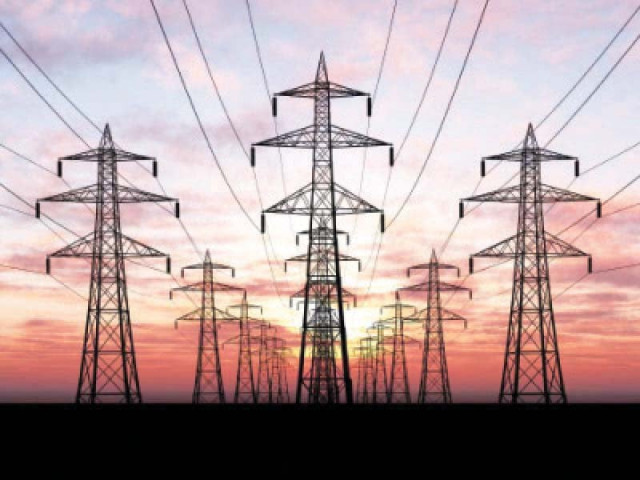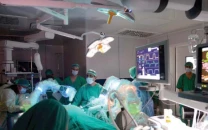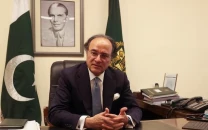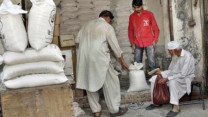Power tariff jacked up by Rs1.68
NEPRA also allows Rs1.39 per unit increase for commercial and industrial consumers

The National Electric Power Regulatory Authority (Nepra) on Friday allowed up to Rs1.68 per unit increase in the electricity tariff from November 1 in order to phase out power subsidies.
The tariff hike is the first phase of eliminating power subsidies. More increases are on the cards as government is working on the second and third phases of reducing subsidies in the power sector. Due to the increase in the base tariff, the government will collect Rs135 billion extra annually.
In a notification issued here, NEPRA decided to increase the electricity tariff by up to Rs1.68 for domestic consumers and Rs1.39 per unit for commercial and industrial consumers. The increase will not apply to consumers using up to 200 units per month.
The new rate for consumers using up to 300 units will be Rs13.83 per unit; for 400-700 units the rate will be Rs21.23 per unit, while for 700 units or more, the price is fixed at Rs24.33.
Earlier, Nepra had conducted a public hearing. During the hearing, the energy ministry had submitted that for the life line consumers and protected consumers up to 200 units, no increase in tariff had been proposed.
However, for the domestic consumers, the increase of Rs1.68 per kilowatt hour was proposed, which also included the impact of life line and protected consumers. For other categories, a lower increase of Rs1.39 per kilowatt hour had been proposed, as the government did not want to overburden the consumers, especially industrial consumers, so that they could remain competitive.
The ministry further submitted that the proposed tariff increase would apply prospectively and was within the overall revenue requirement determined by Nepra. It was also explained that keeping in view the national policy of maintaining uniform tariff across the country, the increase would also be applicable to the consumers of K-Electric.
Upon inquiry from the authority regarding increase in tariff for domestic consumers of up to 300 units, the ministry submitted that in phase-I of the subsidy retargeting programme, slabs revision had been approved by the authority, whereby life line consumption limit had been increased to 100 units and protected consumer category had been created for consumers using up to 200 units, for six months.
However, there were certain consumers, who get subsidy in winter months despite using more than 300 units during summer, the ministry said. The power division said that the ultimate goal of the government was to allow targeted subsidies and recover the cost of electricity.
Read More: Power tariff goes up by Rs1.65 per unit
In the phase-II and the phase-Ill, the subsidies would be rationalised further to improve the cross subsidy in a manner that pillars of the economy such as the industry remained competitive and not overburdened.
The phase-Il was under preparation, and would be presented before the authority for approval, the power division had said. Regarding subsidy to consumers of up to 300 units, it stated that if such consumers were given subsidy, the differential wuold be shifted to other consumer categories.
It was further stated that around 45% of the domestic consumers were still getting subsidy, along with agriculture consumers. The total net subsidy being provided by the federal government was around Rs168 billion.
Arif Bilvani, a consumer of K-Electric had submitted that the ToU Domestic consumers were cross subsidising other consumers and in case of lower consumption, even less than 200 units, no subsidy was provided to the ToU consumers.
Nepra said that it considered that the policy guidelines of the federal government for retargeting power sector subsidy was a step towards recovering the true cost of electricity from the consumers and providing subsidy only to the deserving consumers, thus ensuring that burden of existing cross subsidy had been reduced.
Regarding reasons for increasing the tariff, the authority noted that this primarily included increase in capacity charges, owing to induction of new plants and exchange-rate devaluation etc.
On concerns regarding inclusion of inefficiencies of Discos in tariff on account of T&D losses and under-recoveries, the energy ministry explained that no cost over and above the Nepra targets was included in the tariff and became part of the circular debt only.
While responding to a query regarding breakdown of agriculture subsidy in terms of small and large farmers, the ministry submitted that the total subsidy of Rs74 billion was being provided to the agriculture consumers.
However, it added that the exact breakdown of the subsidy in terms of small and large agriculture consumers was not available at the moment and would be provided later.
The ministry stated that as part of the phase-II of the subsidy reform programme, an analysis was being carried out for dividing the agriculture tube-well slabs into two categories and would be brought before the authority, once completed.
The authority noted with concern the non-availability of the required information and directed the ministry to provide proper breakdown of the agriculture subsidy in terms of small and large agriculture consumers, while submitting its phase-Il of the subsidy reform programme.



















COMMENTS
Comments are moderated and generally will be posted if they are on-topic and not abusive.
For more information, please see our Comments FAQ